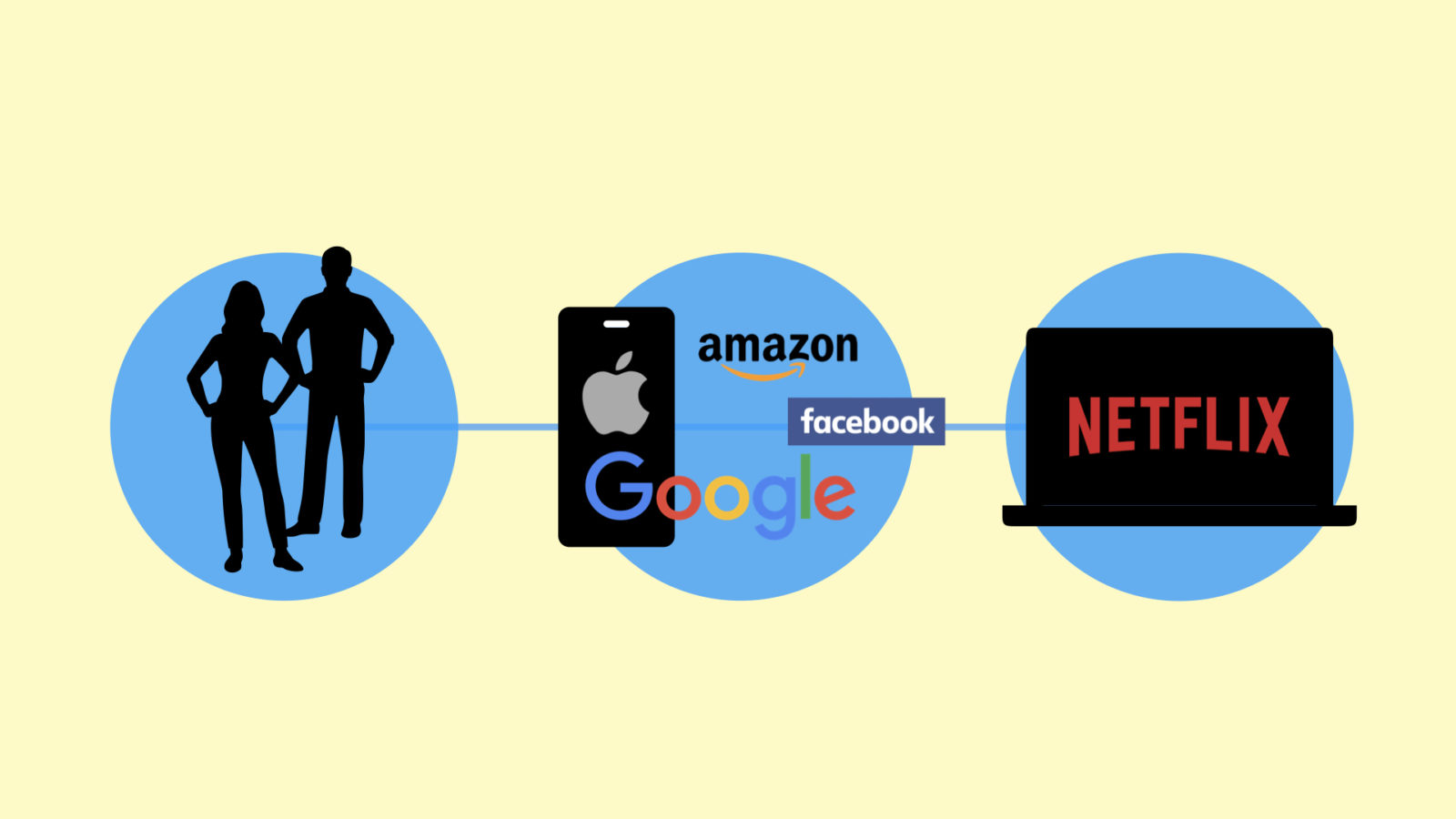iOS 14.5: What does Apple’s new privacy policy really mean for the digital advertising industry?
Last week, Apple launched its latest software update. iOS 14.5 comes complete with ‘Unlock iPhone with Apple Watch, more diverse Siri voice options, and new privacy controls’. The latter has poured fuel onto the existing advertiser-tracking bonfire, making the sharing of user data with apps explicitly opt in. In recent days and weeks we’ve seen reactions from publishers, advertisers, and everyone in-between, but what does Apple’s new privacy policy really tell us about the state of the digital advertising industry at large, as we move further into Q2 2021?
The Rumble in The Bumble
More serious reports about Apple’s intention to clamp down on tracking user behaviour across apps and websites began to surface last year. By December 2020, Apple CEO Tim Cook had tweeted, “We believe users should have the choice over the data that is being collected about them and how it’s used. Facebook can continue to track users across apps and websites as before, App Tracking Transparency in iOS 14 will just require that they ask for your permission first.”
You can almost sense a slight Columbo ‘Just one more thing’ allusion towards the end of Cook’s tweet, as he indicates that if users really are happy for companies to use their personal data in this way, then they should have nothing to worry about.
Clearly though, this did have online dating app Bumble rumbled, as the company made strong reference to the impending changes in its IPO filing in January:
‘We expect that app users’ opt-in rate to grant IDFA access will ultimately be approximately 0 to 20%. As a consequence, the ability of advertisers to accurately target and measure their advertising campaigns at the user level may become significantly limited and app developers may experience increased cost per registration.’
IDFA (Apple ID for Advertisers) works in much the same way as cookies do on the wider web, allowing advertisers to track user behaviour across different apps within the iOS operating system and then have platforms serve tailored ads to them based on their behaviour. The demise of this system is of course not helped by the fact that it coincides with Google’s decision to phase out cookies, causing publishers like The Washington Post to invest heavily in first-party solutions.
Immediate fallout
The immediate fallout from the latest Apple rollout has been one which – for the tech-side geeks amongst us – has provided an even more compelling storyline than the ‘Google vs Publishers’ feud in recent weeks. And like many a good story, it begins with a versus of its own…
Facebook vs Apple
“They’re creating a policy — enforced via iOS 14’s AppTrackingTransparency — that’s about profit, not privacy,” said Facebook in a statement titled ‘Speaking Up for Small Businesses’, which was published at the same time as the aforementioned Tim Cook tweet last year. “It will force businesses,” Facebook goes on, “to turn to subscriptions and other in-app payments for revenue, meaning Apple will profit and many free services will have to start charging or exit the market.”
Since then Facebook appears to have become more resigned to the changes, examining potential solutions, but the industry press remains glued to the bout.
Let he who is without sin, the first cookie cast
This rivalry is important because it highlights the fact that in the world of BIG tech, there are heroes and villains on both sides. Many (including some media owners) may well find Facebook’s claim to be ‘speaking up for small businesses’ laughable, while Apple itself may not be quite the white knight it purports to be in tackling privacy concerns…
The ink was barely dry on Apple’s new software rollout last week, when the EU revealed that the App Store had broken competition rules, citing a monopoly on the app world. Of course, this latest wall to be erected around the Apple garden will do little to change such opinions of the company. Google’s decision to cut the cookie has come under equal fire this year, since Google itself is unlikely to go hungry for digital ad-dollars as it looks to rollout its catchily-titled Federated Learning of Cohorts (FLoC) replacement.
Remember why you started
It’s also fair to say that for all of the industry reaction to Apple’s announcement this last week, consumers are yet to see significant changes on the ground. Initial reports show that in many cases, iPhone users who’ve updated to the new software have not even seen the opt-in prompts appear on their devices, and an article by Insider’s Lara O’Reilly on Friday suggests multiple reasons for this. So if all of these companies are so concerned with our privacy, and small business competitiveness, and a less Big Brother-state internet at large, then they don’t necessarily appear to be prioritising these things at present.

Wider repercussions
What we do know is that this latest big tech manoeuvre represents another step in shifting the web away from an ad-funded model, towards more direct-to-consumer (D2C) focussed products. In days gone by, people have accessed apps on their phones (via either iOS or Android operating systems), and these sharing platforms have acted as gateways to free media content. Now, with less intrusive tech available to advertisers and more and more walled gardens going up around the web, we are seeing a race instead to control the distribution.
In this respect, it’s no surprise that Facebook in particular has been kicking off about the move. With phrases like ‘It’s free and it always will be’ and “Senator, we run ads” having previously set out the company’s stall on the funding of ‘content’, the face book more than any other platform has embraced the lucrative simplicity of advertiser targeting at scale.
When it comes to Google and Apple (and Amazon, which we understand to be making serious inroads into the digital advertising game) the situation becomes more complex. These platforms are just as interested in controlling the distribution as they are the content, and come equipped with enough of their own digital (and physical world) services to necessitate close user contact.
For media owners, who have for some time now been embarked upon their own journey towards the centre circle in creating more D2C offerings, such as subscriptions, events, and ecommerce plays, this moment in digital advertising can represent an opportunity. If the internet does move back towards more of a closed-shop style set-up, with first party relationships providing consumers with a premium content service, then traditional publishers are of course well placed to deliver this.
Ultimately, this latest serving of Apple crumble accelerates the cookie cutting trend that is now going on around the wider web. Consumers are buying back their data and having realised just how valuable that holding is in recent years, may well be more inclined to pay directly for content going forward.
Of course, digital advertising will remain a huge force in the development of the world wide web – at least until the invention of the warp drive, which we expect to take place somewhere around the 2063 mark – but between now and then it may well be that the desire to deliver it alongside quality content within a contextual setting may well accelerate as well.








